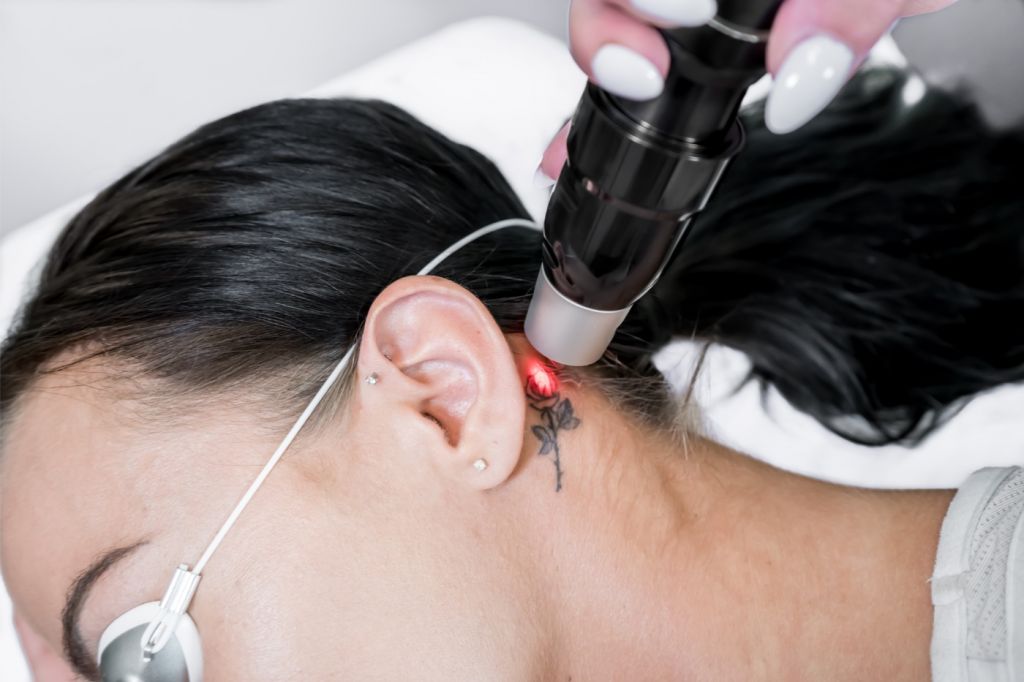You just had laser tattoo removal. Should you tip the technician? If so, how much is appropriate? This article explains if and how much to tip for laser tattoo removal sessions. It provides tips based on time, effort, and cost.
Tipping a laser tattoo removal technician is not commonly expected, as the service is often viewed as a medical procedure. However, if you received exceptional care and wish to express gratitude, a small tip of $10 to $20 is acceptable.

When it comes to the laser tattoo removal industry, there are specific practices and etiquette that guide both clients and businesses. Your understanding of these norms can enhance your experience and interactions.
In the realm of tattoo removal businesses, tipping is not traditionally expected. However, if you receive exceptional service or see significant results that surpass your expectations, you might feel inclined to offer a gratuity. The gesture is seen as a token of appreciation and while not mandatory, it is received warmly. Amounts typically range from $5 to $10, aligning with personal discretion and satisfaction.
When you step into a laser tattoo removal business, your expectations are often based on both the Fitzpatrick scale—a measure of your skin's response to laser treatment—and the professional advice given by the technician. While it's common to have hopes of prompt and complete removal, tattoo regret can sometimes cloud judgment. It's important for these businesses to communicate realistic outcomes and for you, as the client, to maintain patience and understand that several sessions based on ink depth and color may be necessary for optimal results.
In this section, you'll discover what laser tattoo removal involves and the critical role of the technician in this process which employs specialized laser technology to break down tattoo ink.
Laser tattoo removal is an advanced process where laser technology is employed to break up the tattoo ink particles embedded in your skin. This is achieved through the use of Q-switched lasers, which emit short pulses of light energy, targeting the ink and causing it to fragment into smaller pieces. Over time and with multiple sessions, your body naturally eliminates these smaller ink particles, leading to the fading of the tattoo.
A laser tattoo removal technician is a skilled professional who operates the laser equipment and conducts the laser tattoo removal treatment. Their responsibilities include assessing your tattoo, explaining the procedure, designing a treatment plan suited to the ink type, and performing the actual laser application while ensuring your comfort and safety during the process. It's essential to follow their aftercare instructions to support the best possible outcomes from your treatment sessions.
When you’re considering laser tattoo removal, you want to ensure that the technician handling your treatment is both well-trained and certified. This helps guarantee safe and effective results.
Certified laser tattoo removal technicians have gone through rigorous training and safety courses to ensure they provide the highest standards of service. Certification not only affirms their expertise in using laser technology effectively but also their commitment to laser safety protocols. When you're treated by a certified professional, you can have peace of mind knowing that they understand the complexities of skin and tattoo ink interaction.
Training programs for laser tattoo removal, like those offered by the National Laser Institute, blend classroom learning with hands-on training to ensure comprehensive education. Such programs cover various aspects of lasers, client care, and safety measures. Hands-on training is essential—you want your technician to have practiced the techniques you will undergo. These training programs play a crucial role in promoting a high safety standard within the industry, which helps protect you as the client.
When considering whether to tip your laser tattoo removal technician, two main elements often play a role. You’ll gauge these based on the quality of service and your personal experience throughout the tattoo removal process.
The skill and attention to detail a tattoo removal technician brings to the table can significantly influence your decision to tip. Tattoo removal typically requires a series of sessions, especially if the tattoo color is complex or the design is detailed. If your technician displays exceptional prowess in handling the challenges of your particular tattoo—thoroughly explaining the tattoo removal process and managing potential scarring—you might feel inclined to express gratitude through tipping.
Your satisfaction spans more than the results of the laser removal—it includes the entire experience at the tattoo removal business. Positive interactions, thorough aftercare instructions, and a clean, welcoming environment contribute to a satisfactory visit. If the laser tattoo removal cost is on par with the value you perceive you're receiving, you might decide to tip as a token of appreciation for the excellent service and care provided by your technician.
When considering laser tattoo removal, it's important to acknowledge the comprehensive care that can accompany the primary service. Your experience may extend beyond the removal process, including aftercare and potentially additional skin treatments that enhance the results.
After your tattoo removal session, aftercare is crucial for optimal healing and minimizing discomfort. You'll likely receive guidance on how to take care of the treated area, with suggestions such as keeping the area clean and applying prescribed ointments. Follow-up appointments are a part of the treatment plan to assess your recovery and plan subsequent sessions if needed. Remember, diligent follow-up can make a significant difference in your skin's healing process.
Some tattoo removal businesses might offer additional services, such as skin rejuvenation or skin tightening. Treatments like microneedling may be available to improve skin texture and appearance post-removal. Services aimed at cellulite reduction could also be part of the clinic's offerings. If you're exploring comprehensive care that addresses more than just the removal of your tattoo, don't hesitate to ask about all the support and treatments that can aid in your skin's recovery and improve overall results.